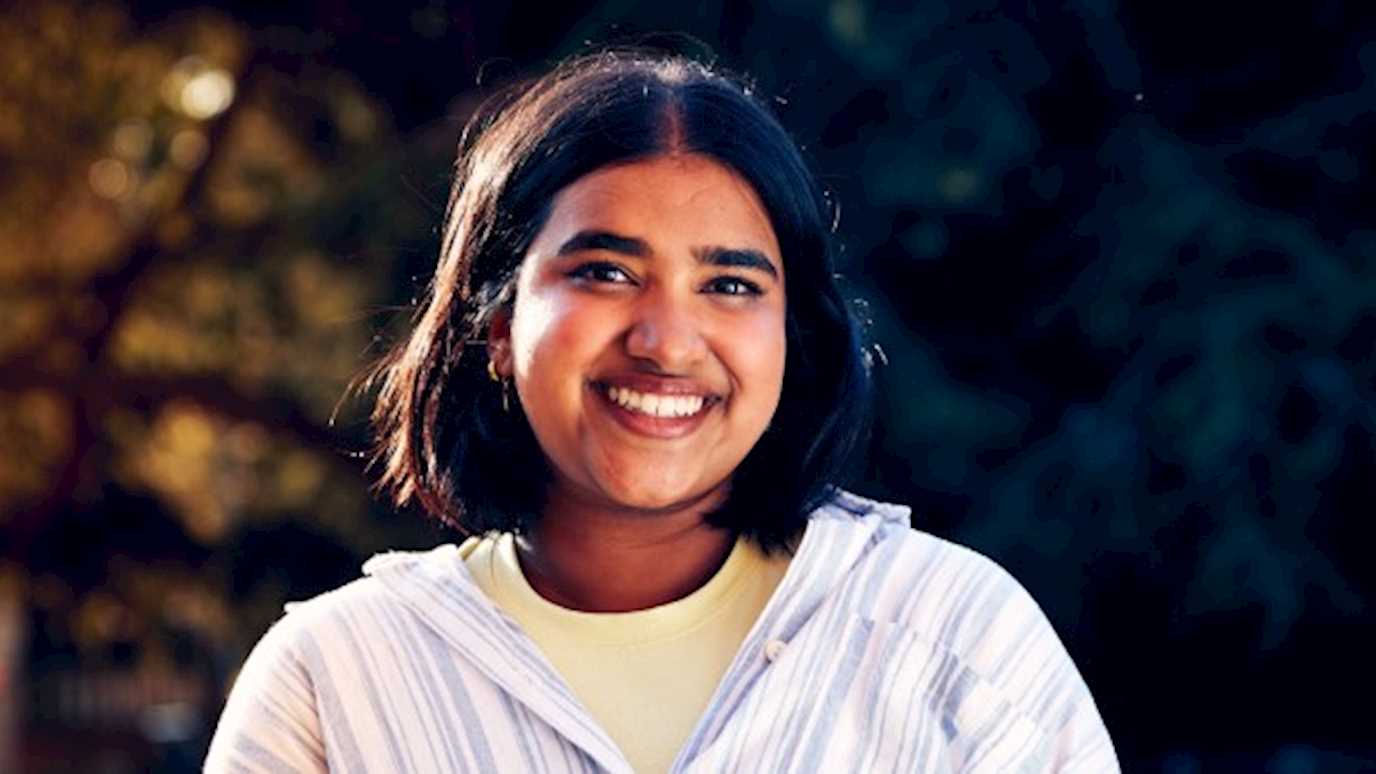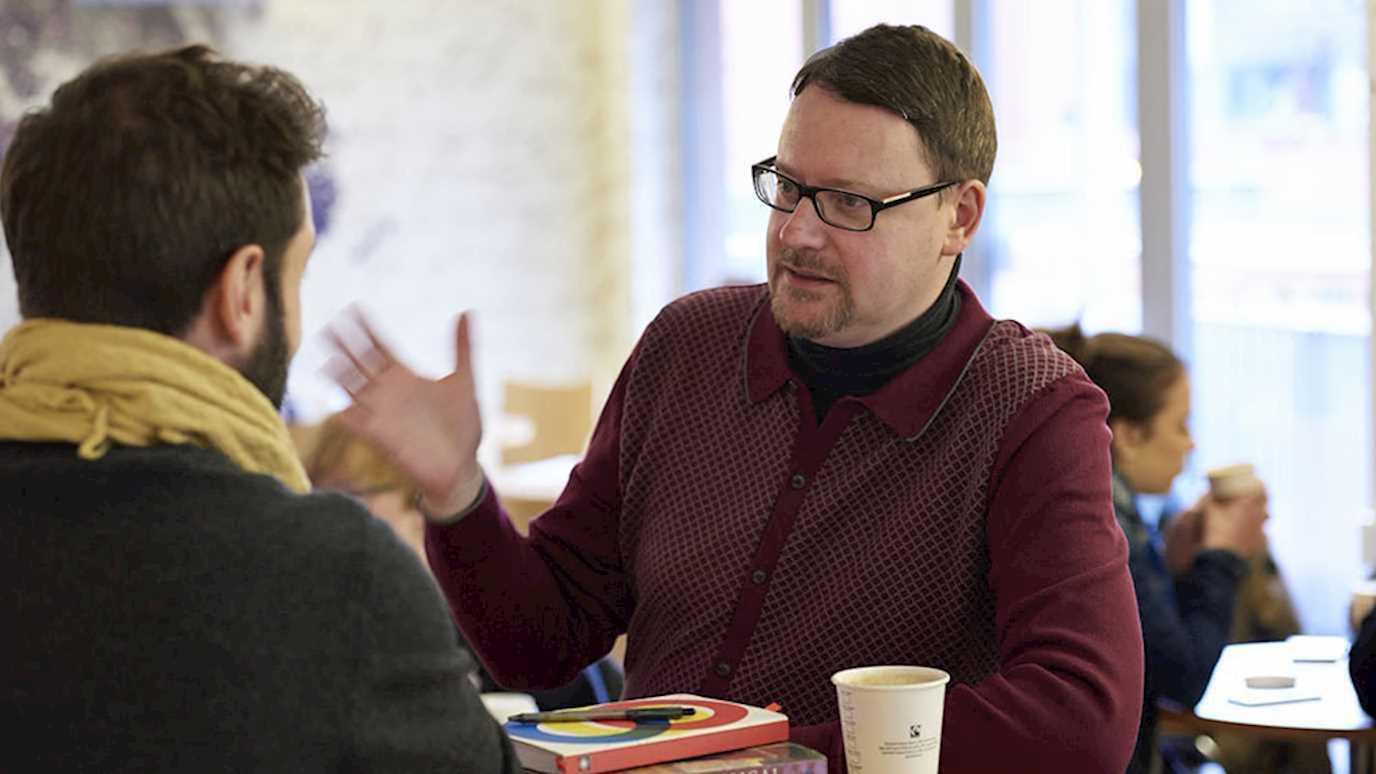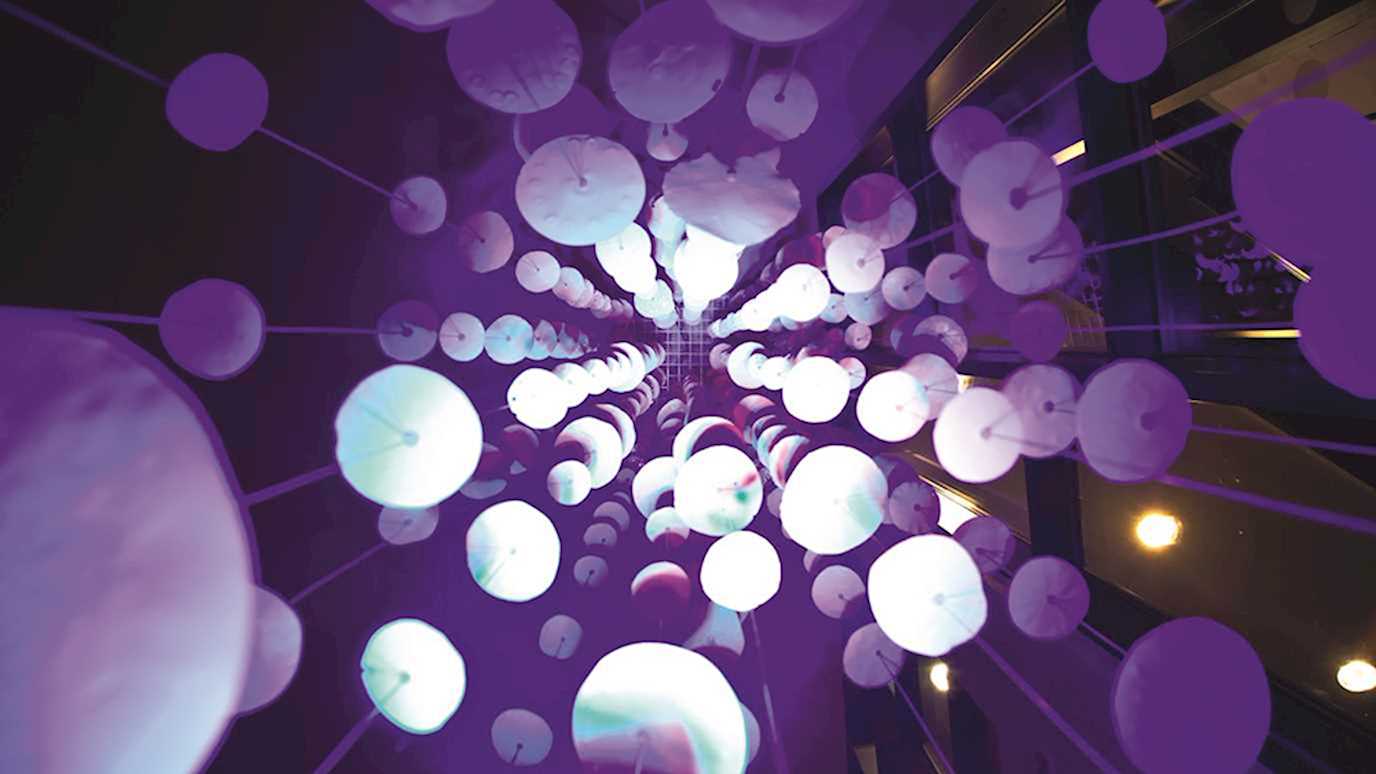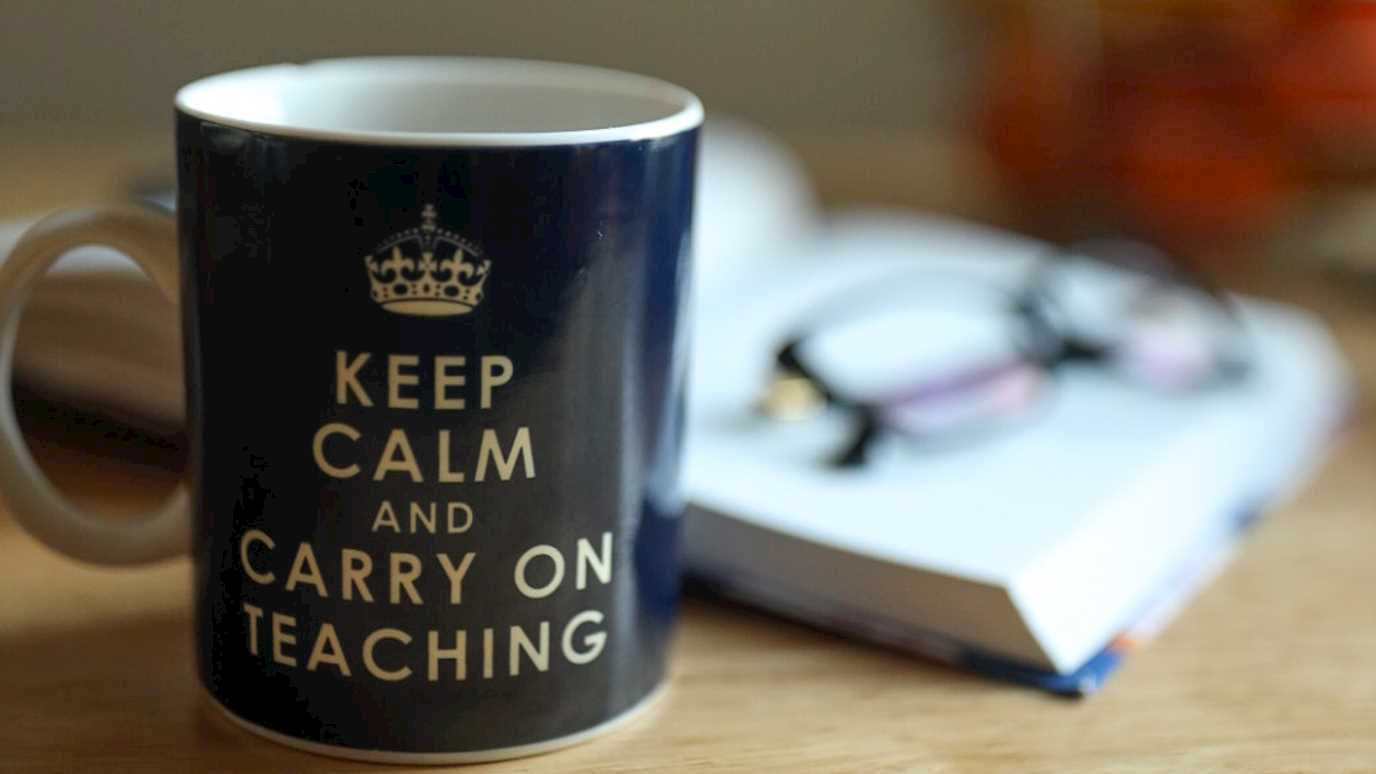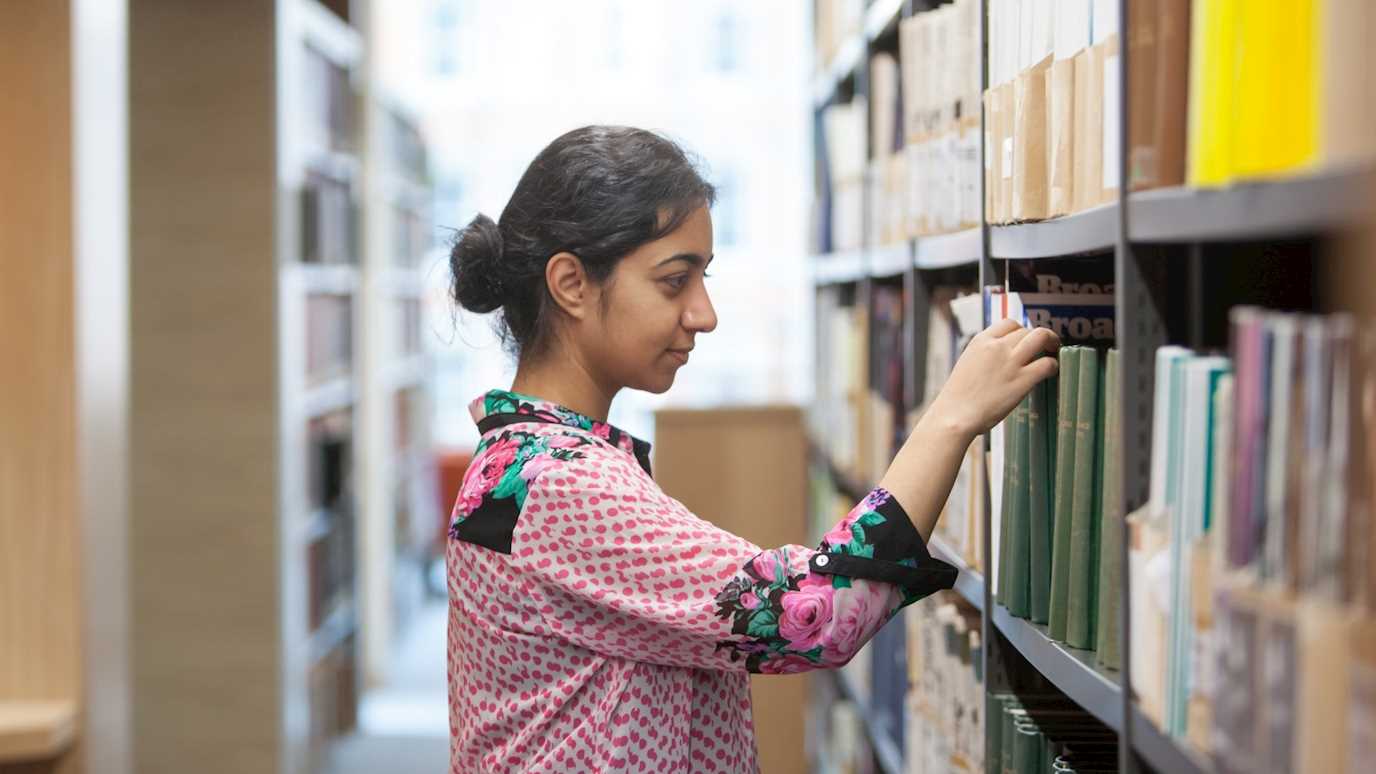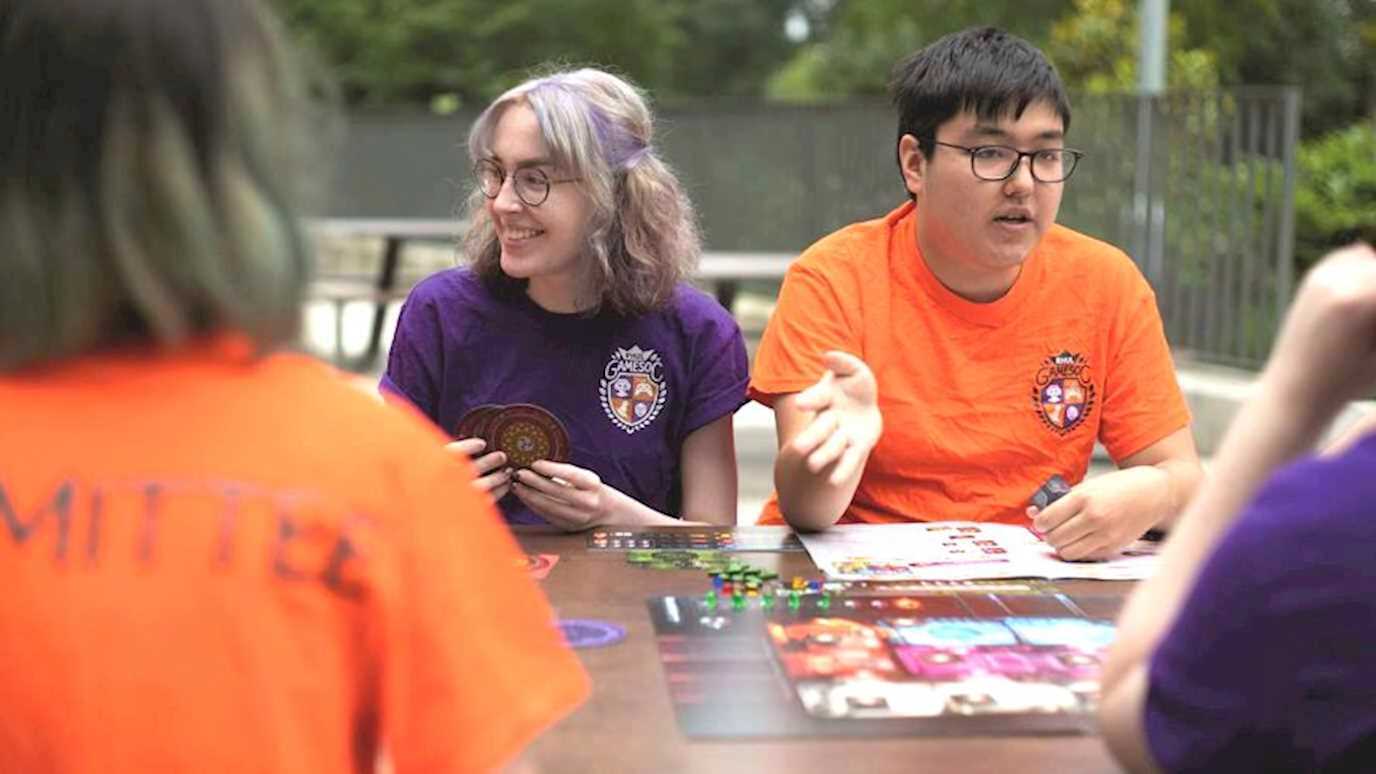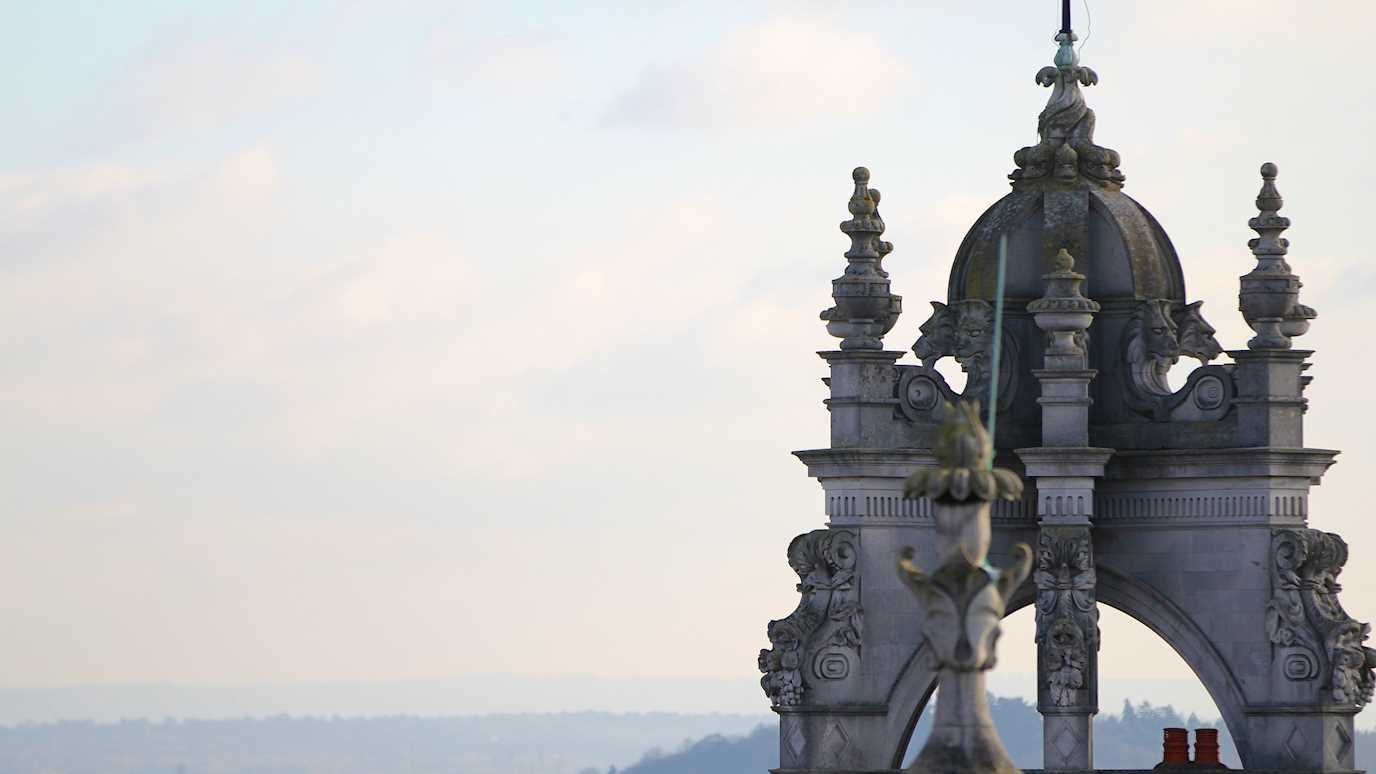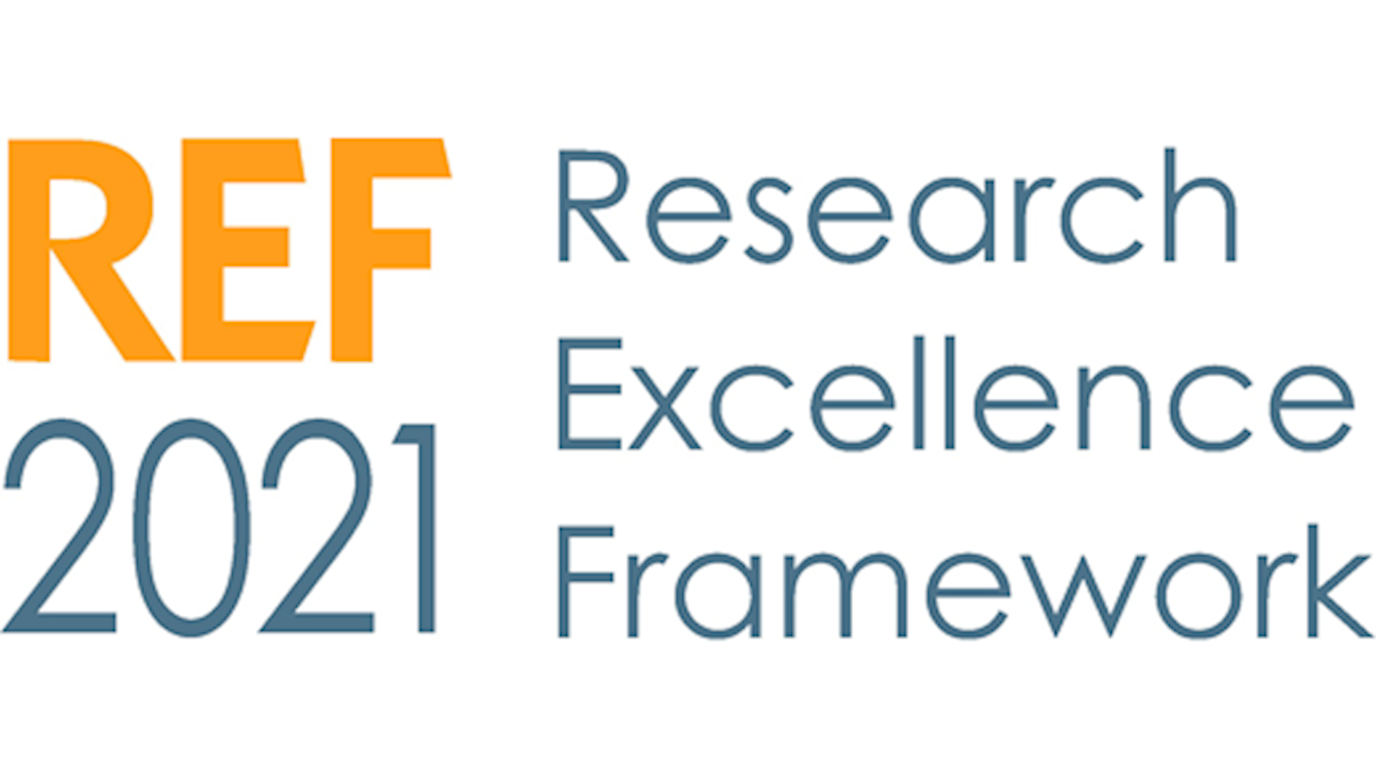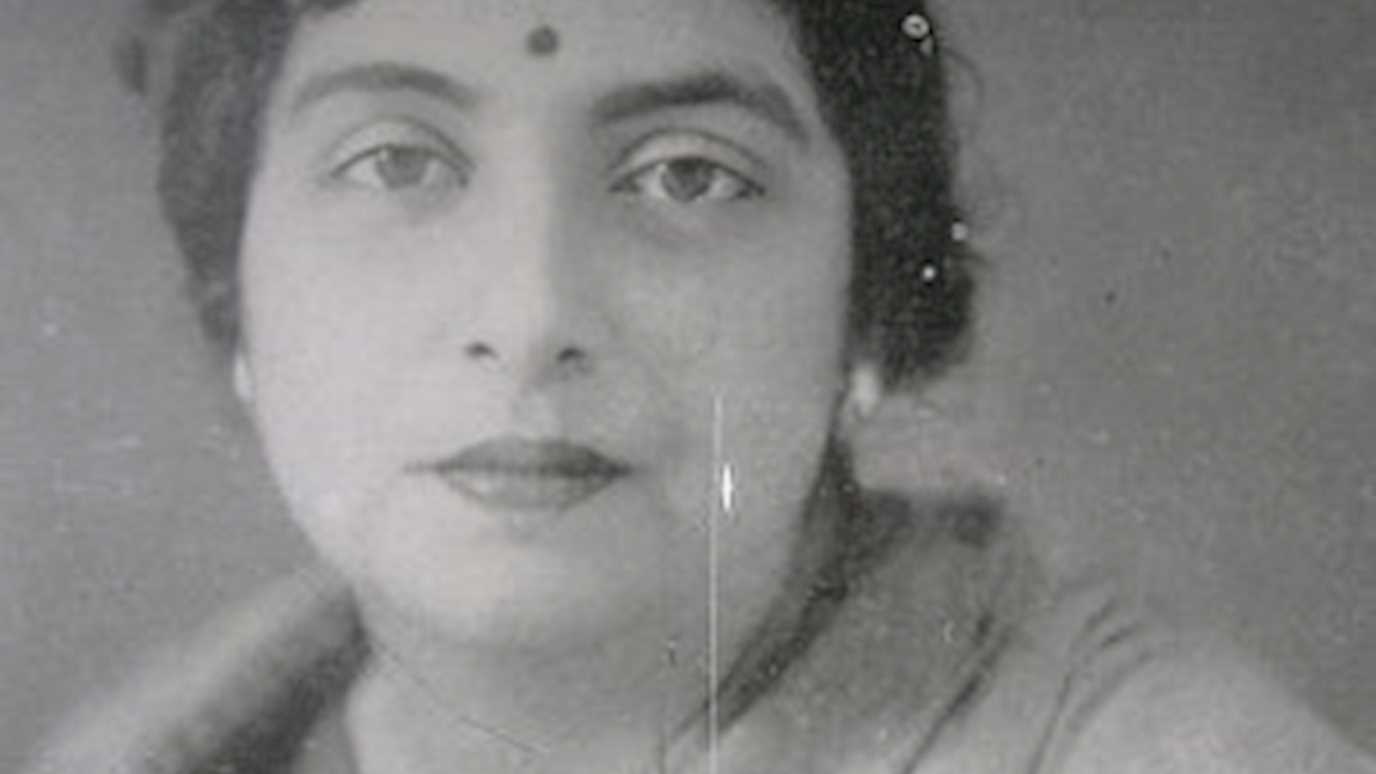Course options
Key information
Duration: 3 years full time
UCAS code: Q200
Institution code: R72
Campus: Egham
The course
Comparative Literature and Culture (BA)
Comparative Literature and Culture offers you the opportunity to study literature from across the world, as well as exploring film, philosophy and visual arts. This course combines a fascinating breadth of material with a focus on contexts – places, periods, and genres – to explore how key cultural shifts transform how we see, represent, and make sense of our changing world. Comparative Literature and Culture at Royal Holloway is a unique and intellectually stimulating course that will develop you as a culturally-aware, creative and adaptable thinker.
We’ve developed this course so that you can tailor it to suit your own evolving interests, enabling you to choose from our exceptionally wide range of fascinating options. These span continents and centuries, from antiquity to the present day, covering novels, poetry, philosophy, cinema and art. You will read, watch, and compare texts from Ancient Greece to contemporary New York, from Cuba to Korea, from epics to crime fiction, and from tragedy to the avant-garde. Comparative Literature and Culture also enables you to study a variety of foreign texts originally written in many languages, all translated into English.
You will be taught by world-class experts who genuinely want to get to know you. We create a supportive environment, often using group work so you can try out new ideas and participate in lively discussions. Throughout your studies, you will receive personal guidance to ensure your course is aligned with your strengths, interests and career plans. As part of our close-knit international community, you will be able to get involved with an array of cultural initiatives that take place on campus and make the most of being within easy reach of London and its many events and attractions.
Studying Comparative Literature and Culture will broaden your horizons, interests and passions, and give you a critical edge in a competitive global marketplace.
- Gain global cultural awareness and an internationally prestigious degree.
- Our teaching methods are diverse, ranging from lectures and small group seminars to e-learning.
- Become a creative, flexible and critical thinker.
- Shape your course according to your own interests.
- Available as a joint honours degree with a wide variety of subjects.
- Consider a year abroad or studying a language
From time to time, we make changes to our courses to improve the student and learning experience. If we make a significant change to your chosen course, we’ll let you know as soon as possible.
Course structure
Core Modules
Year 1
-
This module introduces students to the theories and practices of textual analysis and comparative textual analysis as well as to the major debates about theories and practices of comparative literature in a transnational context. Students will read a small number of core literary texts - influential within comparatism and diverse in cultural, temporal and linguistic origin - alongside a range of historically, geographically, culturally, generically and stylistically varied textual extracts. The core literary texts will be read in their entirety, with particular attention to: the construction and interpretation of genre; transnationalism and translation; cultural and historical context; and questions of authorship, influence and canonicity.
Year 2
-
Comparing short stories from different periods and geographical areas is a great way of exploring how literature evolves structurally and thematically in response to different ideas and contexts. In this module we read short stories – and look at examples of visual art - from the eighteenth century to the present day to discover what structural and symbolic elements characterize major movements of Western art including the Enlightenment, Romanticism, Realism, Modernism and Postmodernism. All non-English-language texts are in English translation. These are explored both individually and in comparison, developing skills in close reading and comparative critical analysis and the ability to recognize and contrast different features of fiction and to situate evolving literary aesthetics in their historical context.
-
This module provides an account of some of the major theoretical trends and currents which inform our thinking and practice of Comparative Literature and Culture. Reading canonical and contemporary texts alongside each other, students will ask questions such as: How should we understand and respond to art in the twenty-first century? Who counts as a subject and how should we understand racial, sexual and species difference? And, how should we conceptualise culture in a globalised world?
Year 3
- All modules are optional
Optional Modules
There are a number of optional course modules available during your degree studies. The following is a selection of optional course modules that are likely to be available. Please note that although the College will keep changes to a minimum, new modules may be offered or existing modules may be withdrawn, for example, in response to a change in staff. Applicants will be informed if any significant changes need to be made.
Year 1
-
This module examines images of French society through a selection of key literary texts and concentrates on how questions of social change, social mobility, success and failure, ambition and honour, oppression and alienation have been portrayed. Delivered by the appropriate specialist in the School of Modern Languages, the classes will offer a taste of the literature of the relevant periods, along with a discussion of its distinguishing stylistic features, and an overview of its intellectual, social, and historical background. Terms that often confuse or put off students new to literature (such as Romanticism, Realism, or Existentialism) will be explained and briefly contextualised. By the end of the module, students will have acquired an insight into a range of representative texts from a variety of periods and an understanding of the ideas and social structures they portray.
-
The visual image has always played an important role in society, as a source of enjoyment and pleasure, and also as a means of communicating values, celebrating beauty, shaping thought and challenging assumptions. This module aims to develop understanding of the ways the visual image functions and the concepts and techniques needed to analyse it.
-
This module will introduce students to key areas of interest in contemporary German Studies, including literature, film, and history.
-
The first term begins with an introduction to themes and ideas in the literature of the Middle Ages – autobiography, love, writers and readers – to provide a firm basis for the study of the three great writers of the Italian Middle Ages. The module then continues with a brief introduction to Dante’s writings, and a close, detailed reading of his earliest work, the Vita Nuova in which he tells the story of his love for Beatrice. In the second term the module covers a selection of the stories from Boccaccio’s most famous work, the Decameron, and a selection of the poems Petrarch wrote for his lady, Laura, which later inspired lyric poetry all over Europe. Visual and dramatic interpretations of the work of these three authors will also be included in the module.
-
Students will learn about the causes and consequence of the Fascist rule in Italy between 1922 and 1945, and study the political and cultural developments of the period. Topics include: ideas of Fascism, Futurism and Fascism, the Cult of Mussolini, and popular culture.
-
The module aims to focus on some of the symbolic passages in the process of nation-building in Italy in the 19th and 20th centuries, as Italy reached its unity only in 1861. Through the study of Foscolo’s Last Letters of Jacopo Ortis (1798), Collodi’s Pinocchio (1880), Calvino’s The Path to the Nest of Spiders (1947), and Tomasi di Lampedusa’s The Leopard (1958) the module aims to give students an understanding of how and why Italy was born so late as a political entity. By focussing on the different stages of the process of Nation building in Italy, the module also aims to make students aware of how Italy’s national identity developed: two books (Foscolo’s and Collodi’s) were written in the 19th century, and will help students to understand the pre-Risorgimento (the making of Italy), and the post-Risorgimento (the making of the Italians); whereas the other two books (Calvino’s and Tomasi’s) come from the 20th century, and will help students to understand the Resistenza (the making of the Republic), and the post-war Italy (the crisis of nationhood).
- Passion and Betrayal on the Spanish Stage
-
Students on this module will be introduced to some of the most important literary, visual and cinematic works from twentieth century Latin America. The works from selected writers pertaining to the Latin American Literary Boom will feature on this module, as well as some of the Nobel Prize winning poets from Latin America. Students on this module will be provided with samples of the artistic wealth (both in styles and techniques) from artists across the Latin American continent. Attention will be paid to the question of identity as reflected in the cinemas of Cuba and Mexico; two of the most important film industries from Spanish speaking America.
-
The module provides a selective but wide-ranging introduction to culture in the Hispanic world from the 15th to the 21st century. It explores a broad range of cultural manifestations from different socio-historical contexts both independently and comparatively from a topic-based perspective. Materials may include plays, narratives, poems, paintings, sculptures, musical compositions and architectural works, while topics may be drawn from (but not be limited to) the following: ‘Discovery’, ‘Destruction’, ‘Subversion’, ‘Self-fashioning’, ‘Power’ and ‘the Body’.
-
In this module you will develop an understanding of the key tenets of film theory and learn to apply these to a selection of important pre- and post-war European and international films. You will look at aspects of film style, genre and national and international contexts.You will consider canonical works from a century of cinema history by filmmakers such as Joseph von Sternberg, Alfred Hitchcock and Pedro Almodovar, and examine significant examples of technique and style.
-
This module introduces students to the theories and practices of textual analysis and comparative textual analysis as well as to the major debates about theories and practices of comparative literature in a transnational context. Students will read a small number of core literary texts - influential within comparatism and diverse in cultural, temporal and linguistic origin - alongside a range of historically, geographically, culturally, generically and stylistically varied textual extracts. The core literary texts will be read in their entirety, with particular attention to: the construction and interpretation of genre; transnationalism and translation; cultural and historical context; and questions of authorship, influence and canonicity.
-
This module introduces students to a range of literary and filmic texts depicting different aspects of the city. The focus on a common thematic ground allows students to develop skills of comparison and analysis, while also exposing them to, and encouraging them to reflect on, wider questions of urban space, public and private spheres, and alterity. The works to be studied on the city explicitly engage with three periods and aspects of the modern city: early twentieth-century modernity, urban development and planning, modernist architecture; post-war industrialisation and urbanisation; and the contemporary transnational metropolis and multiculturalism. In all the periods, the focus will be on how the films articulate the following themes: money/poverty, technology, migration, crime, gender and sexuality.
-
The purpose of this module is to provide students with an introduction to the early phase of film history. Broadly speaking, the module will be concerned with the period between 1895 and the early 1930s, from the invention of motion pictures to the establishment of sound cinema. During this phase, film-making was largely national but the absence of the spoken word gave film a truly cosmopolitan dimension, with directors, actors and technical personnel moving freely across national boundaries. Nonetheless distinctive national film cultures emerged, with Italy specialising in dramas set in the ancient world, France making ample use of theatre and popular literature, Germany developing the new medium within broader artistic phenomena such as Expressionism, the Soviets pioneering political montage, and, of module, Hollywood, and its studio system, popularising stars and genres across the world.
-
This module will introduce students to a number of different media encountered in the study of visual culture. By understanding the technical characteristics of a range of art works students will be able to assess the expressive and stylistic possibilities of offered by different media. Students will study a rich variety of visual cultures in Europe and Latin America from the Middle Ages to the present day. Mediaeval illuminated manuscripts, mural decorations in Renaissance Italy, sculpture, photography and fashion and textiles will be among the media that will be the object of our analysis this year.
Year 2
-
The module is divided into two parts, the first exploring crucial issues of filmmaking, film studies and the ‘transnational’ from the perspective of largely contemporary Latin American cinema, the second focusing on a range of European films from the 1970s to the present. The introductory two weeks of the module will introduce students to these concerns; the final two weeks of the module will bring both parts together and establish some conclusions (for example, what, if anything, constitutes a ‘European’ or ‘Latin American’ or ‘transnational’ film).
-
This module will focus on six novels dealing with the theme of transgression. It will also look at the genre of the novel and at whether the novels studied transgress its formal parameters. The module will be comparative in focus, studying the set texts not only individually, but also looking at thematic and formal convergences and divergences between them. The books to be studied will be: DH Lawrence, Lady Chatterley’s Lover; Alain Robbe-Grillet, La Jalousie/Jealousy; Vladimir Nabokov, Lolita; Esther Tusquets, Stranded; Emile Zola, Thérèse Raquin; Juan Rulfo, ‘Talpa’.
-
Comparing short stories from different periods and geographical areas is a great way of exploring how literature evolves structurally and thematically in response to different ideas and contexts. In this module we read short stories – and look at examples of visual art - from the eighteenth century to the present day to discover what structural and symbolic elements characterize major movements of Western art including the Enlightenment, Romanticism, Realism, Modernism and Postmodernism. All non-English-language texts are in English translation. These are explored both individually and in comparison, developing skills in close reading and comparative critical analysis and the ability to recognize and contrast different features of fiction and to situate evolving literary aesthetics in their historical context.
-
This module provides an account of some of the major theoretical trends and currents which inform our thinking and practice of Comparative Literature and Culture. Reading canonical and contemporary texts alongside each other, students will ask questions such as: How should we understand and respond to art in the twenty-first century? Who counts as a subject and how should we understand racial, sexual and species difference? And, how should we conceptualise culture in a globalised world?
- Visual Arts II: Genre and Movements
-
This module involves an examination of gender as it is expressed, maintained, or challenged by clothing. It investigates a variety of Anglophone, Francophone, and German-language twentieth-century texts, including novels, fine art, and film, in which clothing and gender are closely linked. The module introduces a range of experimental and challenging texts, encouraging critical and comparative thinking about the place of fashion and clothing in culture and society.
-
This module will focus on four texts dealing with love and desire taken from French literature; these will be studied in the light of their common themes and will be used to explore issues around the representation and understanding of passion and romance in the literary text.
-
This year-long module examines key examples of French cinema from its beginnings to the present day, focusing on the avant-garde and surrealist films of the 1920s, social realist films of the 1930s, the New Wave which began in the late 1950s, and its ‘postmodern’ legacy in the 1980s followed by a return to realism in the new millennium. The module entails close, critical analysis of film style, though no prior knowledge of film theory is required.
-
This module introduces students of German and CLC to two key figures in twentieth-century German literature, Thomas Mann and Franz Kafka. Through an examination of the work of these writers, it explores such issues as the individual vs society, the role of the artist, and the nature of desire. Mann’s work evinces a fascination with disorder and decadence even as it remains bound to bourgeois ideals of respectability and sobriety. In Kafka’s work, the everyday world of bureaucracy and officialdom is invaded by fantastical and bizarre elements. The module focuses on the unsettling and disruptive elements of these writers’ works, asking what they tell us about life in the twentieth century.
-
Childhood and youth - the formative periods in our lives - are obviously crucial for individuals, society and culture. They are also contested and controversial concepts. Children and adolescents have long been the subject of social, familial and educational pressures against which they have often rebelled in an attempt to assert their individuality and develop their own identities. This module introduces you to a range of literary and cinematic responses to the lives of children and young people in the context of the German speaking countries from the late nineteenth century to the present day. Drawing on a range of classic and recent texts and films, it explores the historical contexts of the theme and considers the social, political and ethical issues involved in the representation of young people and of institutions such as the school and the military.
- Postwar Italian Cinema: the Auteur Tradition
-
Florence in the 15th century was one of the most vibrant and innovative artistic and cultural centres in Italy and Europe. The cultural, philosophical and artistic life of Renaissance Florence is the focus of this module which combines the analysis of Renaissance painting, mural decoration and sculpture with that of writings on art from the time. We look in detail at a number of works of world famous Italian Renaissance artists such a Masaccio, Sandro Botticelli, Leonardo da Vinci, Raphael and Michelangelo. We also take a close look at texts discussing the role of the arts and artists, and the comparison between the arts by theorists such as Leon Battista Alberti, Leonardo da Vinci, Michelangelo Buonarroti and Giorgio Vasari.
-
On this module students will examine the ways in which critical historical moments in Latin America have been represented visually in a global context. We will explore how political unrest in Latin America has been memorialised by both filmmakers and photographers, with the aim of re-thinking how global imaginaries concerning the rebel and revolution have been constructed in film and photography.
Year 3
-
The module examines in depth, and in relation to each other, artistic and literary movements prevalent in late-nineteenth and early-twentieth-century Italy and France. On this module you will analyse the contribution of the Decadentists and Symbolists, Futurists and Cubists to a variety of artistic disciplines in France, Italy and Europe.
-
This module explores cinematic representations of the transnational encounter between people, cultures and institutions interconnected by the forces of globalization. The topics covered range from (anti-)colonialism and revolution to neo-colonialism, postcoloniality and migration. Attention is paid to the ways in which the films deal with the themes of emancipation, hybridity, displacement, global capitalism and politics, and cosmopolitanism. The module covers the development of transnational cinema from its origins with Third Cinema and then goes on to explore postcolonial and migration cinema covering areas ranging from South America and Africa to Europe.
-
In this module, we will examine representations of human and animal life in twenty-first century fiction and thought. We will consider the ways in which the human-animal relation informs ideas of human identity, and explore the different literary techniques employed to represent animal life. We will ask questions such as: what does it mean to be human? What is the difference between animals and humans? And how can we understand and represent animal experience?
- Final-Year International Film Dissertation
- Modern Languages Dissertation
-
This module explores how French novels and films of different genres and decades reflect, perpetuate and challenge the effects of fast-developing consumer capitalism and globalization on conceptions of identity between writers and artists over a century of experimentation.
- Text and Image in France: from Cubism to the Present
- Blindness and Vision in French Culture
-
In theory at least, early modern French theatre had little time for villains. Genuine wickedness, vice and evil were regarded as too serious a subject matter for comedy, while theorists of tragedy insisted that a wicked character – whether ultimately defeated or triumphant – could not produce pity, one of the key tragic emotions. And yet, as this module demonstrates, wicked and villainous characters recur throughout ‘classical’ French theatre. Indeed, by refusing to present villainous characters who are simply outright monsters – a straightforward ‘other’ to the social and moral norm – playwrights sometimes suggest that the most troubling characters are those in whom we might recognise elements of ourselves.
-
This module will explore the idea of the self as it is defined and expressed in literary works in German. From Goethe's canonical Werther via Schnitzler, Hesse, Bachmann and Handke, right up to contemporary writings by Karen Duve and Birgit Vanderbeke, German literature is always bound up with notions of identity.
-
This module will introduce you to one of the most crucial and controversial subjects in modern German history, society and culture. You will study a broad range of examples of the visual representation of National Socialism as an ideology, a political movement and a 'national' phenomenon, from the 1930s to the present day. You will think about the changing ways in which Germany has sought to deal with the legacy and memory of Hitler's regime.
-
Florence in the 15th century was one of the most vibrant and innovative artistic and cultural centres in Italy and Europe. The cultural, philosophical and artistic life of Renaissance Florence is the focus of this module which combines the analysis of Renaissance painting, mural decoration and sculpture with that of writings on art from the time. We look in detail at a number of works of world famous Italian Renaissance artists such a Masaccio, Sandro Botticelli, Leonardo da Vinci, Raphael and Michelangelo. We also take a close look at texts discussing the role of the arts and artists, and the comparison between the arts by theorists such as Leon Battista Alberti, Leonardo da Vinci, Michelangelo Buonarroti and Giorgio Vasari.
-
The module explores the role of fashion and design in Italy in the period 1945-1994. We look at the ways in which design and fashion interacted with major economic, cultural and societal trends. The first part of this module focuses on Italian design in the postwar period, with particular emphasis on the development of furniture, interior, and industrial design. The work of a number of architects/designers such as Gio Ponti, the Castiglioni brothers, Ettore Sottsass and Alessandro Mendini are analysed in detail. The analysis of Italian fashion focuses on the creation of the so-called ‘Italian style’ and on the passage from couture fashion to the ready-to-wear industry of the late 20th century with a particular focus on the work of Emilio Pucci, Gianni Versace and Giorgio Armani.
- Seducing the Nation: Spanish Film 1940s to 1980s
-
This module introduces students to a range of important texts and authors, both canonical and non-canonical, from early modern Spain and France. Yet it does so through a selection of outsider figures – characters whose aberrant or idiosyncratic identity, outlook, or behaviour sets them at odds with their society. The characters on this module thus challenge some of society’s most deeply entrenched but often unwritten codes – of reason, gender, decorum, sexuality, class, and religion – and can thus offer important insights into the workings and values of the society whose norms they transgress. As we shall see, though, the treatment of such figures can vary widely. Whereas the outsider’s departure from the norm is often apparently ridiculed or censured, it can sometimes be celebrated or rehabilitated – whether by other characters within the fiction or by the literary work itself. Indeed, the period’s fascination with marginal or transgressive characters and behaviour betrays throughout a deep unease about the validity of its own norms and standards.
-
On this module students will explore the horror genre by exploring a broad range of films made in Spain and Latin America. Following an introduction to horror filmmaking, we will analyse texts in relation to horror’s numerous subgenres (gothic, physiological, psychological, science fiction, zombie etc.) and will learn both how to identify different types of horror film as well as to situate them in the history of horror filmmaking.
- Comparative Literature and Culture: Comparative Dissertation
-
Literature has a long history of multilingualism. Self-translated, bilingual texts were widespread in medieval and early modern Europe, where they connected Latin and the vernaculars. But the historic construction of nation-states imposed borders that were linguistic as well as geopolitical. Writing multilingually is never more important or more dangerous than when national borders are threatened by wars – or defended by walls. This module focuses on a range of writers and writing practices in a comparative manner: some were born into a bilingual culture and acquired two languages simultaneously; some, but not all, translate their own work. Others acquired their definitive literary language as adults, often as a result of migration or exile. You will look at how, in their literary endeavours, the featured authors used languages – English, French, German and Italian – other than their mother tongues, which they sometimes combined with their native ones and/or with other languages.
- Visual Arts Dissertation
Teaching & assessment
The course has a modular structure. You will take 120 credits’ worth of modules each year. You will be taught through a combination of lectures and small seminar groups, where you will be able to try out new ideas by giving presentations and participating in lively discussions in a supportive environment. Private study and preparation are essential parts of every course, and you will have access to many online resources and the University’s comprehensive e-learning facility, Moodle, which provides a variety of supporting materials.
We use a range of assessment models to suit different learning styles, from online comprehension tests and individual and group presentations, to coursework and examinations. You will take a study skills course during your first year, designed to equip you with and enhance the writing skills you will need to be successful in your degree. This course does not count towards your final degree award but you are required to pass it to progress to your second year. In your final year you will have the opportunity to write a research-led dissertation.
You will also have your own Personal Advisor, a member of academic staff who will help you through your studies and guides you in tailoring your course. When you arrive at Royal Holloway, you will take specially designed courses to help you develop the academic and writing skills that will benefit your university career and beyond.
Entry requirements
A Levels: BBB-BBC
Required subjects:
- At least five GCSEs at grade A*-C or 9-4 including English and Mathematics.
- An essay based subject at A Level
Where an applicant is taking the EPQ alongside A-levels, the EPQ will be taken into consideration and result in lower A-level grades being required. For students who are from backgrounds or personal circumstances that mean they are generally less likely to go to university, you may be eligible for an alternative lower offer. Follow the link to learn more about our contextual offers.
T-levels
We accept T-levels for admission to our undergraduate courses, with the following grades regarded as equivalent to our standard A-level requirements:
- AAA* – Distinction (A* on the core and distinction in the occupational specialism)
- AAA – Distinction
- BBB – Merit
- CCC – Pass (C or above on the core)
- DDD – Pass (D or E on the core)
Where a course specifies subject-specific requirements at A-level, T-level applicants are likely to be asked to offer this A-level alongside their T-level studies.
English language requirements
All teaching at Royal Holloway (apart from some language courses) is in English. You will therefore need to have good enough written and spoken English to cope with your studies right from the start.
The scores we require
- IELTS: 6.5 overall. Writing 7.0. No other subscore lower than 5.5.
- Pearson Test of English: 61 overall. Writing 69. No other subscore lower than 51.
- Trinity College London Integrated Skills in English (ISE): ISE III.
- Cambridge English: Advanced (CAE) grade C.
Country-specific requirements
For more information about country-specific entry requirements for your country please visit here.
Undergraduate preparation programme
For international students who do not meet the direct entry requirements, for this undergraduate degree, the Royal Holloway International Study Centre offers an International Foundation Year programme designed to develop your academic and English language skills.
Upon successful completion, you can progress to this degree at Royal Holloway, University of London.
Your future career
As a culturally-aware, creative and adaptable thinker, graduating from Royal Holloway will help you stand out in a crowded global marketplace.
Students of Comparative Literature and Culture are attractive to employers because they think quickly and flexibly, communicate effectively, have a rich cultural and transnational awareness and the ability to analyse closely and range broadly.
By the time you graduate, you will have:
- developed your critical and analytical thinking and expression
- learned to analyse, evaluate and process effectively many different kinds of information
- honed impressive written and oral communication skills
- enhanced your ability to solve problems in sophisticated and flexible ways
- developed independent research skills
- acquired teamwork and leadership skills that are highly valued by prospective employers
- gained a critical appreciation of cultural life and cultural diversity
We work closely with Royal Holloway’s Careers and Employability Service to provide tailored events which get you thinking about life after you graduate. These range from one-to-one advice from our subject consultant, to a variety of talks and industry-themed careers weeks.
You may also like to take advantage of other work experience opportunities, for example by participating in Royal Holloway’s Community Action volunteering programme or by becoming a Student Ambassador. Your Personal Advisor will be on hand to support you as you decide on your career path.
On graduation, you will be ready to pursue a career in a wide range of areas including publishing, marketing, the media, journalism, arts administration, fashion, international management, the civil service, accountancy or teaching. Alternatively, you may choose to continue your studies.
“Comparative Literature and Culture has helped me develop several key skills, including my analytical skills and my ability to work in a team. I’ve also developed as a person” Hope Dinsey
“I’d recommend Comparative Literature and Culture to anyone who is interested in broadening their horizons and being open to all kinds of literatures, media and cultures – in fact, I’d recommend it to anyone, full stop! The lecturers are truly passionate about their subjects and so knowledgeable, but they’re also approachable and engaging; it’s a pleasure to be taught by them.” Natalie Ford
Fees, funding & scholarships
Home (UK) students tuition fee per year*: £9,250
EU and international students tuition fee per year**: £25,900
Other essential costs***: There are no single associated costs greater than £50 per item on this course.
How do I pay for it? Find out more about funding options, including loans, scholarships and bursaries. UK students who have already taken out a tuition fee loan for undergraduate study should check their eligibility for additional funding directly with the relevant awards body.
*The tuition fee for UK undergraduates is controlled by Government regulations. The fee for the academic year 2024/25 is £9,250 and is provided here as a guide. The fee for UK undergraduates starting in 2025/26 has not yet been set, but will be advertised here once confirmed.
**This figure is the fee for EU and international students starting a degree in the academic year 2025/26.
Royal Holloway reserves the right to increase tuition fees annually for overseas fee-paying students. The increase for continuing students who start their degree in 2025/26 will be 5%. For further information see fees and funding and the terms and conditions.
*** These estimated costs relate to studying this particular degree at Royal Holloway during the 2025/26 academic year and are included as a guide. Costs, such as accommodation, food, books and other learning materials and printing, have not been included.



